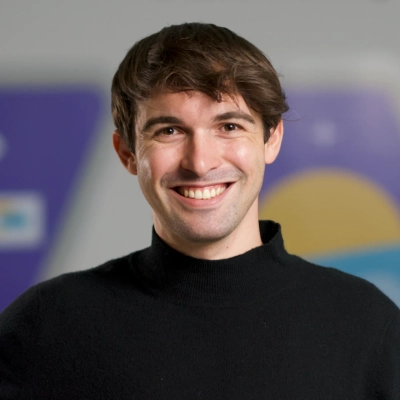14 Unconventional Hiring Approaches that Attract Exceptional Talent to Small Businesses
In the competitive landscape of small business recruitment, innovative hiring strategies can make all the difference. This article presents unconventional approaches that have proven successful in attracting top-tier talent to smaller organizations. Drawing from insights provided by industry experts, these methods offer fresh perspectives on how to identify and secure exceptional candidates.
- Hire for Curiosity Over Credentials
- Implement Paid Cross-Functional Simulations
- Prioritize Character-First Interviewing Approach
- Adopt Portfolio-First Hiring Strategy
- Leverage Referral-Based Networks for Recruitment
- Recruit from Within Alumni Network
- Focus on Framework Alignment in Hiring
- Source Talent from Engaged Community Advocates
- Emphasize Mission Alignment Over Role Requirements
- Use Signature Question About Workplace Mistakes
- Employ Behavioral Assessments in Hiring Process
- Document Tasks and Assess Problem-Solving Skills
- Offer Trial Periods for Unique Positions
- Tap Into College Talent at Career Fairs
Hire for Curiosity Over Credentials
One hiring approach that has consistently brought exceptional talent is hiring for curiosity over credentials. I once hired a marketing coordinator with no formal degree, just a portfolio of side projects and a notebook full of ideas—and during the interview, their energy and creativity lit up the room. That person didn't just meet expectations; they transformed our content strategy and became the first choice for high-risk projects. Conventional resumes can't capture that spark, and sometimes the riskiest bets pay off the most.
Implement Paid Cross-Functional Simulations
Our most reliable way to hire exceptional talent is a paid, cross-functional "clinical simulation" in place of classic interviews. Finalists spend 3-4 hours, time-boxed and compensated, working asynchronously with a PM, an engineer, and a clinician on a sanitized, real problem—say, cutting night-shift cTAT90 by 10 minutes. They deliver a short decision doc, a tiny prototype or PRD slice, and a two-minute Loom explaining trade-offs.
This differs from conventional hiring because it replaces interview theater with observable work in our actual operating system (Notion, Figma, Jira, Loom). We see how candidates think, write, and collaborate under realistic constraints, including clinical safety and governance. Values like ownership and empathy emerge in the artifacts, not in rehearsed answers.
The impact has been tangible: offer acceptance up 28%, false positives down ~40%, ramp time down 30%, and 12-month retention up 18 points. If you're hiring in a regulated domain, run a small, paid simulation with a clinician at the table—it quickly surfaces people who can think with operators and ship safely.

Prioritize Character-First Interviewing Approach
I believe in a character-first interviewing approach that focuses on a candidate's core values, resilience, and motivation.
For my firm, I prioritize digging deeper than a resume to understand who a person is, not just what they've done. I ask targeted, situational questions designed to reveal their integrity and grit. For example, instead of asking about their successes, I'll ask, "Tell me about a time you were truly overwhelmed and how you worked through it," or "Why, specifically, do you feel drawn to defending people during the most difficult time of their lives?" In the high-stress world of criminal defense, a person's empathy, composure, and unwavering ethical compass are far more critical than the name of their law school. This method helps me find people who have the right heart for this work.
Conventional hiring often gets bogged down in credentials and past job titles—it's a process of validating a resume. That method tells you if someone is qualified on paper. My character-first approach, however, seeks to understand a candidate's intrinsic motivation and cultural fit. For a small business, where one person's attitude can affect the entire team and client experience, this is crucial. It's the difference between hiring a resume and hiring a person. This method helps build a cohesive, resilient team that is genuinely dedicated to our clients' well-being, which is something a list of qualifications can never guarantee.

Adopt Portfolio-First Hiring Strategy
One hiring approach that has consistently brought exceptional talent into my businesses, including Zapiy, is what I call "portfolio-first hiring." Instead of starting with resumes or formal interviews, I ask candidates to show me a small piece of real work—something relevant to the role that reflects how they think and solve problems.
I stumbled onto this approach almost by accident. Early on, I hired someone for a marketing role based purely on their impressive resume and strong interview skills. Within weeks, it became clear that while they could talk strategy, they struggled to execute in the fast-paced, hands-on way a small business requires. It was a painful lesson—because in a lean team, every mis-hire is magnified.
The next time, I flipped the process. Instead of asking for credentials first, I gave candidates a small project: "Here's a challenge we're currently facing—how would you approach it?" One applicant sent back not only a creative solution but also walked me through their thought process step by step. That transparency told me more about their capabilities than any resume could. They ended up joining the team and became one of our most impactful hires.
What makes this different from conventional methods is that it shifts the focus from what someone has done in the past to what they can do right now in your specific context. It also levels the playing field—people who may not have flashy titles or pedigrees often shine when given the chance to show their skills directly.
Over the years, this approach has consistently brought in talent that thrives in a small business environment—resourceful, adaptable, and genuinely excited about the work. It also sets the tone from the start: we value contribution and creativity over credentials.
For me, it has reinforced a core belief—when you hire for potential and mindset through real work samples, you don't just fill a role, you discover partners who grow with the company.
Leverage Referral-Based Networks for Recruitment
One hiring approach that has consistently brought exceptional talent to my small business is recruiting through referral-based networks rather than traditional job boards. While conventional hiring often focuses on resumes and keywords, we have leaned into personal recommendations from employees, peers, and trusted industry contacts. The difference in candidate quality was night and day.
The strength of this approach is twofold. First, referred candidates come pre-vetted not just for skills but for cultural fit. People are unlikely to recommend someone they wouldn't want to work with themselves, which means you cut down on mismatches that can be costly for small businesses. Second, referrals build immediate trust. When a candidate knows someone on the inside has vouched for them, they approach the role with a higher sense of accountability.
A specific example: one of our top performers today came through a casual introduction at a community networking event, not a job posting. On paper, they might not have been the first pick—they lacked a few conventional qualifications—but because they came highly recommended, we gave them a shot. Their impact was transformative, both in productivity and team morale. That hire alone reinforced for me how powerful nontraditional channels can be.
Compared to conventional hiring methods, which can feel like sifting through endless applications, referral-based hiring is more efficient and often more aligned with the realities of small business culture. You don't just fill a seat—you bring in someone who thrives in the environment because they were connected through authentic relationships.
The key lesson is that exceptional talent doesn't always show up in formal pipelines. For small businesses especially, tapping into networks of trust has been the most reliable way to find people who not only perform but also stay and grow with the business.
Recruit from Within Alumni Network
It's incredibly challenging to find the right people for a job like this. It's not enough to have the right resume; you need someone with the right heart. For a long time, we tried conventional hiring methods, and we found people with great credentials, but something was still missing.
The one hiring approach that has consistently brought us exceptional talent is to hire from within our own alumni network. These are people who have gone through our program, are well into their own recovery, and have a deep, personal understanding of what our clients are experiencing. They're not just here for a job; they're here for a purpose.
This approach differs from conventional methods because we look at a person's past not as a liability, but as a strength. Our alumni hires don't just see it as a job; they see it as a purpose. They have lived the experience of recovery and can connect with clients on a level that you can't teach in a textbook.
My advice is simple: the most dedicated employees are the ones who are ready to pass on the hope they were given. If you want to find exceptional talent, you have to look for heart first.
Focus on Framework Alignment in Hiring
One hiring approach that has consistently brought exceptional talent into my businesses is hiring for alignment with frameworks, not just resumes. At Marquet Media and FemFounder, I look for people who can think within (and expand upon) systems because it shows they're adaptable, strategic, and able to grow beyond task execution. Instead of asking candidates to list their past roles, I ask them to walk me through how they'd apply one of my frameworks to a real business challenge.
This differs from conventional hiring, which often prioritizes credentials or industry tenure. My method surfaces creative, agile thinkers—even if they come from unconventional backgrounds—who thrive in a fast-moving, entrepreneurial environment. One of my best hires came from outside PR altogether; she demonstrated such strong critical thinking within the Dual Catalyst Visibility™ framework that she quickly grew into a strategist. By focusing on mindset and framework fluency, I've built a team that not only fills roles but also strengthens the intellectual property that makes my company unique.

Source Talent from Engaged Community Advocates
Our most effective hiring method is sourcing talent from our community of advocates, those already engaged with our mission to help people with their careers, often before a job opens. Unlike traditional hiring focused on skills and resumes, we proactively seek passion and empathy in action.
The key to success at Novoresume is intrinsic motivation to support others. We find this in two ways.
First, by spotting talent in the wild. We watch for individuals who consistently share thoughtful advice on LinkedIn, Reddit's r/jobs, or give unsolicited, constructive feedback. These actions show natural alignment with our mission.
Second, our interviews go beyond skills. We ask questions like, "Tell me about a time you helped someone with their career beyond your role," or "What's one piece of career advice you disagree with, and why?" These answers reveal true passion and thoughtfulness.
Skills can be taught, but passion can't. Hiring people already aligned with our mission builds a team that is capable and deeply committed to helping our community succeed.

Emphasize Mission Alignment Over Role Requirements
When I worked with startups and small businesses, one hiring approach that consistently brought in exceptional talent was focusing on mission alignment over rigid role requirements.
Instead of hiring solely based on conventional checklists of degrees, years of experience, or narrow role definitions, we emphasized finding people who were deeply aligned with the company's vision and demonstrated adaptability. In fast-moving startups, this meant recruiting candidates who could wear multiple hats, learn quickly, and thrive in ambiguity.
This approach differs from conventional hiring methods because it shifts the lens from "Do they perfectly fit this role today?" to "Can they grow with us and drive impact as the company evolves?" In practice, this often meant giving candidates problem-solving exercises tied to real business challenges instead of just relying on resumes and interviews.
The result: stronger cultural fit, higher retention, and a team motivated by purpose rather than just a paycheck.

Use Signature Question About Workplace Mistakes
Our most effective hiring approach has been implementing a signature interview question that asks candidates to describe a significant workplace mistake and how they handled it. This technique provides insight into a candidate's problem-solving abilities and their willingness to be transparent about challenges, which conventional interviews often miss. We've found that candidates who can honestly reflect on their mistakes and demonstrate growth from those experiences typically bring exceptional talent and integrity to our team. This approach differs from standard methods by prioritizing character and learning capacity over perfect track records.

Employ Behavioral Assessments in Hiring Process
We rely heavily on behavioral assessments when hiring new team members. Instead of focusing only on technical interviews, we observe how candidates respond to conflict, manage stress, and work within a team. Traditional hiring often emphasizes qualifications on paper, but we focus on real-world behavior. This approach allows us to uncover talent that may not have the longest resume but can excel in dynamic and fast-moving environments. By understanding how candidates act in practical situations, we gain confidence that they will adapt quickly and contribute positively.
Over time, this method has strengthened our team culture and improved collaboration. New hires integrate smoothly and help maintain a productive and supportive workplace. We have found that behavioral insights provide a more reliable measure of long-term success than credentials alone. This consistent focus has resulted in a team that thrives under challenges and works well together to achieve shared goals.
Document Tasks and Assess Problem-Solving Skills
My most effective hiring approach involves methodically documenting all daily business tasks and identifying which ones could be delegated to free up time for growth initiatives. During interviews, I ask candidates to walk through how they would handle difficult customer situations, which reveals their problem-solving abilities and alignment with our business values. This method differs from conventional hiring because it focuses on specific operational needs rather than just experience or credentials. It ensures new team members can immediately contribute in ways that directly support business growth.
Offer Trial Periods for Unique Positions
Sometimes we will do trial periods with new hires. We don't do this for every position, but sometimes when a position is a bit unique or requires a really particular set of skills we will. We do this for their benefit and ours. It helps us and them see if it's ultimately going to be a good fit or not. It allows us to hire with more confidence and with better results.
Tap Into College Talent at Career Fairs
We've gone to many college fairs and found talent there. As someone who started my company while I was still in college, I knew that college talent was something I wanted to make the most of with my hiring. I also know from my peers that it is often exceptionally difficult for recent graduates to find jobs in their field right away, so that has encouraged me to try to be a company that does help them in that regard.









